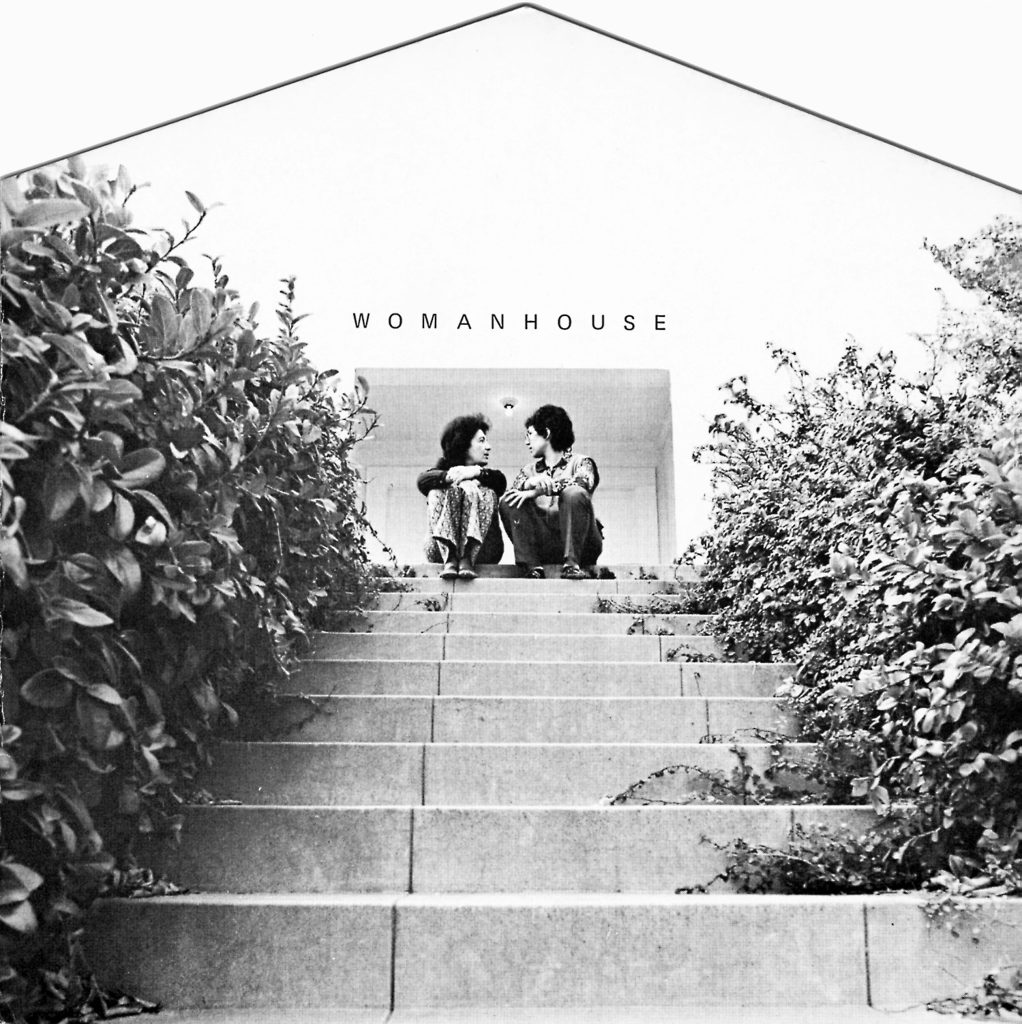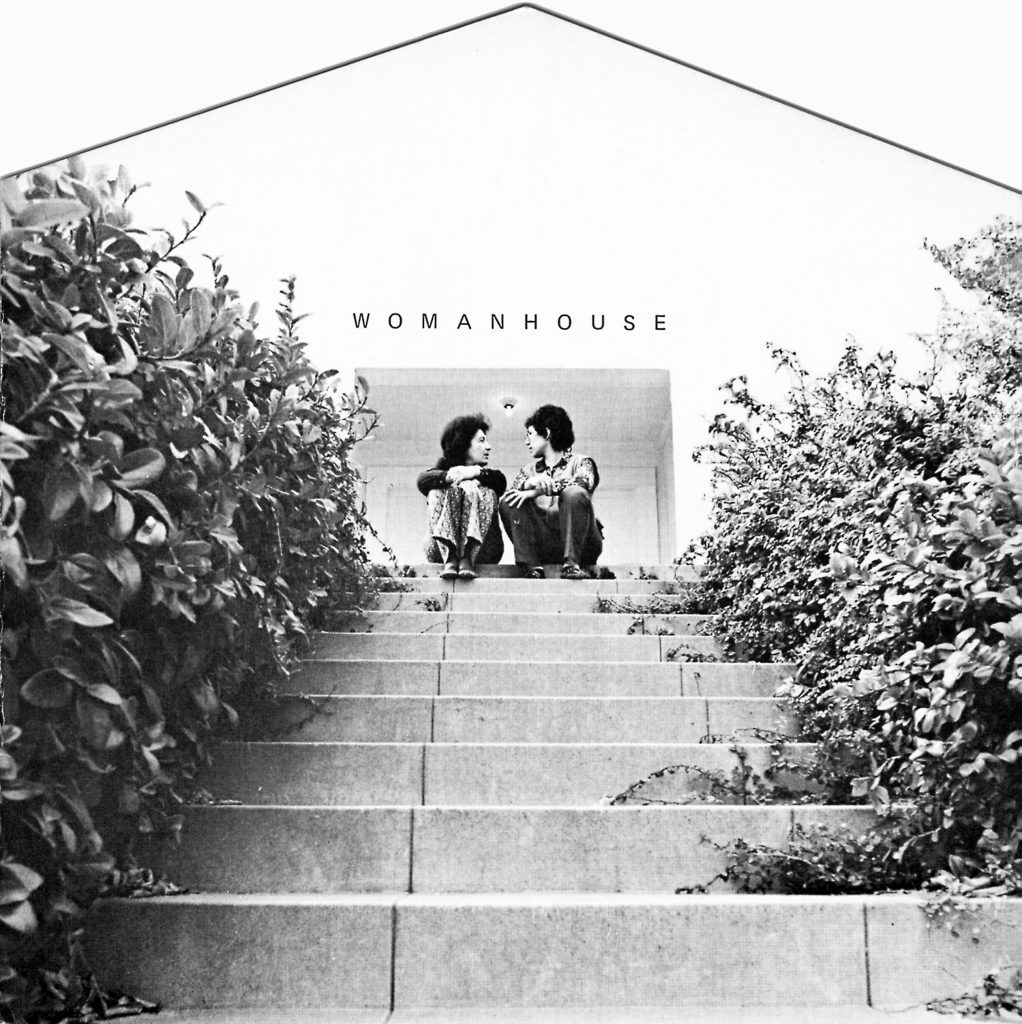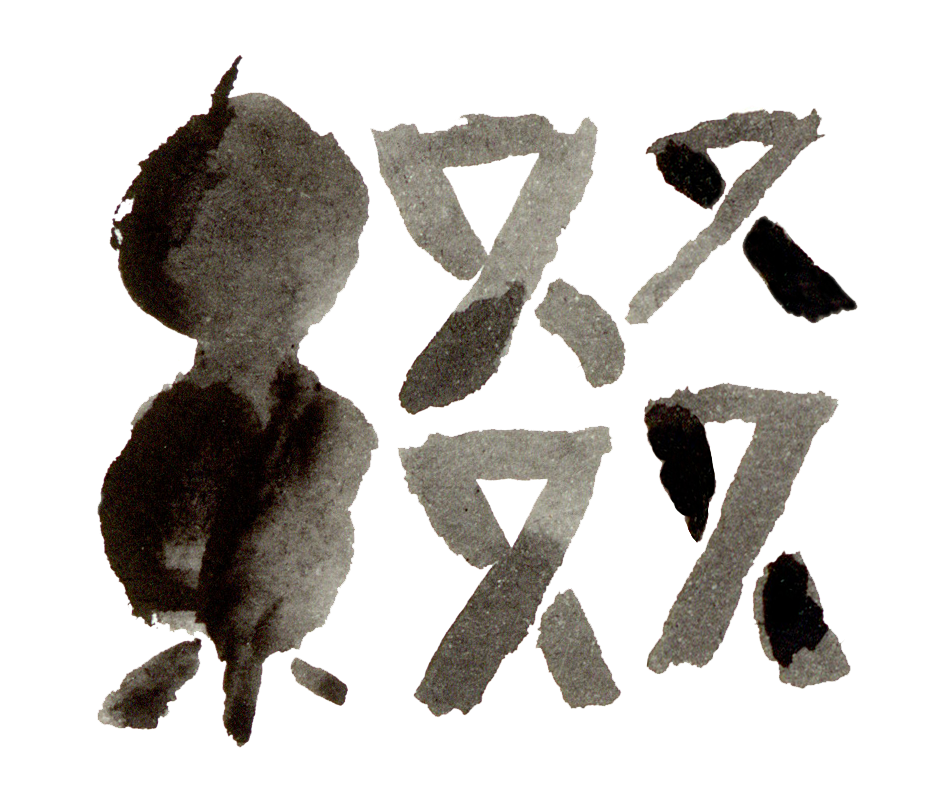ARCHIVES
2024.02.29
空き家の再生におけるアートの可能性 前編
ソーシャリー・エンゲージド・アートはどのように空き家を変えるのか?
金沢市菊川エリアに点在する空き家を、芸術を通じて再定義し、地域社会、文化、経済における空き家の新たな可能性を引き出すには、どのようなアプローチの方法があるのでしょうか?このレポートでは、「ソーシャリー・エンゲージド・アート(Socially Engaged Art, SEA)」を軸として、世界各地の空き家を活用した実践事例を前編・後編に分けてひもといていきます。
ソーシャリー・エンゲージド・アートとは?
「Engage」が「関与する」を意味する通り、ソーシャリー・エンゲージド・アートとは、公共空間と交わりコミュニティや人びとと連携しながら、社会・政治的な問題にアプローチする現代アートの形式です。「ソーシャリー・エンゲージド・アート」という用語は、2000年代以降の欧米、日本では2011年の東日本大震災・福島原発事故を経て広く使用されるようになりましたが、「社会に関与する」芸術実践は、それよりずっと前から存在していました。※1例えば、1880年代にイギリスで始まったアーツ・アンド・クラフツ運動にも、その系譜を辿ることができます。
アーツ・アンド・クラフツ運動から民芸運動へ
産業革命による急速な近代化・工業化は、工場労働者の低賃金・長時間労働をもたらし、都市部では貧富の格差が広がり、人口の流出で農村部は荒廃しました。劣悪な労働環境のなかで大量生産された工業製品へのアンチ・テーゼとして、中世の手工芸の復興や、よりシンプルな生活様式への回帰が提唱されました。※2このアーツ・アンド・クラフツ運動を先導したウィリアム・モリス(1834-1896)は「古建築物保護協会(Society for the Protection of Ancient Buildings)」(1877)を設立し、建築物の元型と異なる修復や改変、取り壊しに異を唱え、住環境問題にも取り組んでいました。

写真注釈「ウイリアム・モリスが構想した赤レンガの家RED HOUSEでは、内装・家具はモリス、ジョーンズが絵を、ロセッティが絵画を描くなど仲間たちと協力してプロデュースされました」
後にアーツ・アンド・クラフツ運動に影響を受けた柳宗悦(1889-1961)は、西洋をモデルに進められる日本の近代化・工業化のなかで、「下手物」であった雑器を「民衆的工芸(民芸)」と名付け 、地方の生活文化を再評価する民芸運動を提唱しました。また柳や志賀直哉(1883-1971)とともに、文芸雑誌『白樺』(1910~1923)を創刊した武者小路実篤(1885-1976)は「新しき村」(1918-)という共同体を作り、自給自足の生活を営みました。「新しき村」の活動のなかでも、地方の空き家が活用されています。芸術を通じてより良い社会や人びとの生活の実現を目指すこれらの取り組みは次世代へと受け継がれていきます。
美術館・ギャラリーから外へ広がる
1960年代には、美術館やギャラリーの外に広がる公共空間での芸術実践が世界各地で展開されました。アーティストが美術館やギャラリーの商業主義に反抗し、絵画・彫刻といった従来の形式や概念に挑戦する芸術実践は、前衛(アヴァンギャルド)美術と呼ばれました。さらに1970年代には、屋外で自然の素材を用いて構築されるランド・アートや、特定の場所の物理的・歴史的な性質を活かしたサイト・スペシフィック・アートが登場します。彫刻と建築の領域が交差するなかで、美術館やギャラリーと公共空間の限界と可能性が問われました。このような既存の美術制度に対する批判(インスティテューショナル・クリティーク)は、「芸術とは何か」を問い直し、コンセプトや思考プロセス、制作方法を芸術作品の価値として強調するコンセプチュアル・アートへと展開していきました。この潮流は、アートの脱美術館および脱ホワイトキューブ化を顕著にし、パブリック・アートへと発展していきます。
フェミニスト・アートと空き家
1970年代に活発になった美術制度批判は、当時のフェミニズム運動とも共鳴し、アート・ワールドにおける男性中心主義を露呈させ、フェミニスト・アーティストたちを勢いづけました。その先駆者であるミリアム・シャピロ(1923-2015) とジュディ・シカゴ(1939-)は、学生や地元のアーティストたちとともに、ロサンゼルスの空き家を丸ごと一軒使い、女性の家庭内経験を表現した作品で埋め尽くした《ウーマンハウス》(1972)を発表しました。※3シャピロとシカゴは 女性たちが壊れた窓を取り替えたり、電気工事をしたり、床を張り替えるといった男性たちが担ってきた重労働を引き受けることで、多くの女性がエンパワーメントされ、 表現の可能性も広がると考えたのです。《ウーマンハウス》では、大規模なインスタレーションやパフォーマンスが行われ、1か月の展覧会で1万人以上の観客が訪れました。

featuring Judy Chicago and Miriam Schapiro,1972
Designed by Sheila de Bretteville
©Judy Chicago/Artists Rights Society (ARS), New York
Photo Courtesy of Though the Flower Archives at Penn State University
《ウーマンハウス》に参加したスイス生まれのアーティスト、ハイディ・ブッハー(1926-1993)は、1973年以降、空き家の内部にラテックスを塗り、皮膚のように剥ぎ取っていくシリーズ《皮膚の部屋》というパフォーマンスおよびインスタレーションの制作を始めました。※4両親の別荘や、先祖代々受け継がれてきた祖父母の家といった、自身の生い立ちに関係する建物内部の「皮膚」を剥がす行為は、父権主義的な家族構造を批判し、そこからの解放を象徴するものでした。《ウーマンハウス》や《皮膚の部屋》シリーズは、「心理地理学」的なアプローチを通じて、「家」というものはレンガやセメントだけでなく、記憶や経験とともに構築されたものであることを証明したと言えます。
ここで述べる「心理地理学(Psychogeography)」とは、人びとの感情や行動と、建物、場所、空間といった地理的環境の関係を研究する試みであり、シチュアシオニスト・インターナショナル(1957-1972)によって提唱されました。ギー・ドゥボール(1931-1994)を中心に設立されたシチュアシオニスト・インターナショナルは、芸術と日常生活の間の障壁を取り払うことを目指した国際的な運動です。ドゥボールは、近代の資本主義がもたらした大量消費社会、管理社会を『スペクタクルの社会』(1967)と批判し、都市空間を活用して日常生活に浸透した社会政治的課題に、芸術的アプローチで取り組みました。※5
建築、彫刻、アートの境界を揺さぶる
ドゥボールやシチュアシオニスト・インターナショナルを支持し、ランド・アートのロバート・スミッソン(1938-1973)とも交流があったゴードン・マッタ・クラーク(1943-1978)は、空き家を使い、近代化によって都市が喪失したものは何かを問いかけました。※6 《スプリッティング》(1974)は、経済の停滞と中流階級人口の流出 によって衰退したニュージャージー州イングルウッド区の空き家を真二つに切断しています。現地までのバスツアーも企画し、鑑賞者に地方都市の荒れ果てた景観を提示しました。《円錐の交差》(1975)において 同様に、ポンピドゥーセンターの建設により取り壊しが決定していた17世紀の長屋2軒に穴を開け、再開発による古い街並みの消失を批判しました。マッタ・クラークは、建築物そのものを作品の一部として取り込むことで、建築と彫刻の領域を広げる新しい表現を展開したと言えるでしょう。ちなみに、マッタ・クラークはニューヨークのソーホーでアーティストが運営するレストラン「FOOD」(1971-1974)を開店します。このプロジェクトは、料理と パフォーマンス・アートの境界を揺さぶるだけでなく、後述するコミュニティ・アートの先駆例ともなりました。
オランダ生まれのマリアン・ティーウェン(1953-)による《破壊された家》(2008-)シリーズも同様に、建築物の破壊と再構築をテーマとしたインスタレーションおよび写真作品です。※7ティーウェンは、取り壊しが決定した空き家の資材や構造を利用し、建設と 破壊、秩序と混沌といった正反対のもの、すなわち人間の相反する振舞いの矛盾を、建築とアートの両面から 表現しています。
マッタ・クラークやティーウェンの作品は、鑑賞者に空き家の存在を提示することで、次の問題を浮き彫りにしました。長く放置された空き家は、地域の景観を損なうだけでなく、犯罪の多発や衛生面の悪化を招き、住民の生活環境に悪影響を及ぼします。資本主義がもたらした消費文化によって、新築を建てることがライフプランの主流となり、未利用の建物や土地や資材が浪費されて開発が進み、さらに人口減少や都市部への流出によって空き家が増え続けるというサイクルは、果たして持続可能なのでしょうか。これらの作品は、鑑賞者が自らの置かれた社会システム、自然環境、生活、そして空き家について考え直すきっかけを与えました。
まとめ
ここまで、産業革命以降の社会の変遷と並行して、アーティストが社会や政治の問題、差別や貧困に対して、様々な形態を駆使しながら抵抗と変革を試みた海外を中心とした例を紹介してきました。いつの時代においてもアーティストは世界の潮流を敏感に察知し、芸術概念をアップデートすることが求められています。いずれはどの芸術様式も新しい時代の波とともに順に過去へと押し流されていく宿命ではあるのですが、時を経て過去の概念が後世に影響を及ぼす事例も起こっています。人間が創造することをやめないのは何故なのでしょうか。創造という営みが形を変えつつ継続するのは、私たちにとって何か意味があるからなのでしょうか。
次編では上記のソーシャリー・エンゲージド・アートの形態が現代にいたるまでどのように変遷していくのか、さらにご紹介していこうと思います。
リサーチ:
清水 冴(しみず・さえ) インディペンデントキュレーター 中国・景徳鎮在住
中森 あかね (なかもり・あかね) アートディレクター NPO 法人綴る 理事 金沢市在住
参照
アーツ・アンド・クラフツ運動と民芸運動からソーシャリー・エンゲージド・アートへと展開する系譜は山本浩貴『現代美術史-欧米、日本、トランスナショナル』(中公新書、2019)を参照しています。また本レポートの執筆にあたり、同書から多くの示唆を得ています。
※1 ソーシャリー・エンゲージド・アートは、単一の理念や方法論では論じきれない豊かな広がりを持っているため、ここではアートの社会的実践を包括的に指し示す用語として使用します。
・パブロ・エルゲラ(アート&ソサエティ研究センターSEA研究会訳)『ソーシャリー・エンゲイジド・アート入門 アートが社会と深く関わるための10のポイント』(フィルムアート社、2015)
・アート&ソサエティ研究センターSEA研究会『ソーシャリー・エンゲイジド・アートの系譜・理論・実践 芸術の社会的転回をめぐって 』(フィルムアート社、2015)
・SEAリサーチラボ http://searesearchlab.org(2024年2月24日閲覧)
※2 アーツ・アンド・クラフツ運動と民芸運動の参照は下記
・Yuko Kikuchi “Japanese Modernisation and Mingei Theory: Cultural Nationalism and Oriental Orientalism”(Routledge Curzon, 2004)
※3《ウーマンハウス》(Womanhouse)の参照は下記
・National Museum of Women Artist in the Art https://nmwa.org/exhibitions/women-house/(2024年2月24日閲覧)
・Judy Chicago https://judychicago.com/gallery/womanhouse/pr-artwork/(2024年2月24日閲覧)
※4 ハイディ・ブッハー(Heidi Bucher)の参照は下記
・Heidi Bucher https://heidibucher.com(2024年2月24日閲覧)
※5 ギー・ドゥボール(木下誠訳)『スペクタクルの社会』(筑摩書房、1967)
※6 ゴードン・マッタ・クラーク(Gordon Matta-Clark)の参照は下記
・山本浩貴『現代美術史-欧米、日本、トランスナショナル』(中公新書、2019)
・図録『ゴードン・マッタ=クラーク展』(東京国立近代美術館、2018)
※7 マリアン・ティーウェン(Marjan Teeuwen)の参照は下記
・Marjan Teeuwen https://www.marjanteeuwen.nl(2024年2月24日閲覧)
・KYOTOGRAPHIE2020 https://2020.kyotographie.jp/exhibitions/marjan-teeuwen/(2024年2月24日閲覧)
The possibility of art in the regeneration of empty houses
How can Socially Engaged Art transform empty houses?
What are the approaches to redefine the empty houses scattered around the Kikugawa area in Kanazawa City through arts, and to draw out new possibilities for empty houses in the context of local community, culture and economy? In this multi-part report, we will unfold a range of case studies from around the world that have utilised empty houses, through the lens of Socially Engaged Art (SEA).
What is Socially Engaged Art?
As the word “engage” suggests, Socially Engaged Art is a form of contemporary art that approaches social and political issues by engaging with public spaces in cooperation with communities and people. The term “socially engaged art” has been widely used in Europe and the US since the 2000s, and in Japan after the Great East Japan Earthquake and Tsunami and subsequent Fukushima nuclear accident in 2011. And yet, socially engaged art practices existed long before that (1). For example, its lineage can be traced back to the Arts and Crafts Movement, which began in the 1880s in the UK.
From the Arts and Crafts Movement to the Mingei Movement
The rapid modernisation and industrialisation brought by the Industrial Revolution resulted in lower wages and longer working hours for factory workers. It also widened the gap between rich and poor in urban areas, and led to a population exodus which devastated rural areas. As an antithesis to the industrial products mass-produced under poor working conditions, a revival of medieval handicrafts and return to a simpler way of life were advocated (2). William Morris (1834-1896), who led the Arts and Crafts Movement, founded the Society for the Protection of Ancient Buildings in 1877, which objected to making buildings different from their original form through actions such as restoration, alteration or demolition, and also worked on issues of living environment. Influenced by the Arts and Crafts Movement, Yanagi Sōetsu (also known as Yanagi Muneyoshi, 1889-1961) proposed a movement to re-evaluate local everyday culture in Japan, renaming getemono (lit. low-quality popular products) as mingei (lit. folk crafts, an abbreviation for minshū-teki kōgei) in the course of Japan’s modernisation and industrialisation following the western model. Saneatsu Mushanokōji (1885-1976), who, together with Yanagi and Naoya Shiga (1883-1971) founded the literature magazine Shirakaba (1910-1923), established a community called Atarashiki-mura (lit. new village, 1918-) living a self-sufficient lifestyle. Empty houses in rural areas are also used in the activities of the Atarashiki-mura. These initiatives, which aim to realise a better society and everyday living through art, have been passed onto subsequent generations.
Extending to outdoors from museums and galleries
In the 1960s, artistic practices in public spaces extending to outside of museums and galleries developed in different parts of the world. This artistic practice, in which artists defied the commercialism of museums and galleries and challenged conventional forms and concepts of painting and sculpture, became known as Avant-garde Art. The 1970s also saw the emergence of Land Art, which is constructed outdoors using natural materials, and Site-specific Art, which utilises the physical and historical qualities of specific locations. As the realms of sculpture and architecture intersected, the limits and possibilities of museums and galleries as well as public spaces were questioned. This critique of the existing art system (Institutional Critique) developed into Conceptual Art, which rethinks “what is art,” and emphasises concepts, thought processes and production methodology as the value of a work of art. This trend marked the de-museuming and de-white-cubing of art and developed into Public Art.
Feminist art and empty houses
The Institutional Critique that became active in the 1970s resonated with the feminist movements of the time, exposing the male-centredness of the art world and galvanising feminist artists. Pioneering artists Miriam Schapiro (1923-2015) and Judy Chicago (1939-), together with students and local artists, presented Womanhouse (1972), an entire empty house in Los Angeles filled with works representing women’s domestic experiences (3). Schapiro and Chicago believed that by having women take on the hard work that men had traditionally done, such as replacing broken windows, doing electrical work and re-covering floors, many women would be empowered and their potential for expression would expand. Large-scale installations and performances took place at Womanhouse, attracting more than 10,000 visitors over the course of a one-month exhibition.

featuring Judy Chicago and Miriam Schapiro,1972
Designed by Sheila de Bretteville
©Judy Chicago/Artists Rights Society (ARS), New York
Photo Courtesy of Though the Flower Archives at Penn State University
Swiss-born artist Heidi Bucher (1926-1993), who participated in Womanhouse, began creating a series of performances and installations called Hautraum (lit. skin room) from 1973 onwards, in which she applies latex to the interior of an empty house and then strips it away like skin (4). The act of “skinning” took place inside buildings related to her upbringing, such as her parents’ holiday home and her grandparents’ house that had been passed down from generation to generation, and was a critique of patriarchal structures of family that symbolised liberation from them. The Womanhouse and Hautraum series proved, through a psychogeographical approach, that a “house” is not only made of bricks and cement, but is also constructed with memories and experiences.
The psychogeography mentioned here is an attempt to study the relationship between people’s emotions and actions and their geographical environment, such as buildings, places and spaces. Psychogeography was advocated by Situationist International (1957-1972). Founded around Guy Debord (1931-1994), Situationist International is an international movement that aims to break down the barriers between arts and everyday life. Criticising the mass consumption and controlled society brought about by modern capitalism as The Society of the Spectacle (1967), Debord used urban space to address the socio-political issues that permeated everyday life with an artistic approach (5).
Testing the boundaries between architecture, sculpture and art
Gordon Matta-Clark (1943-1978), a supporter of Debord and Situationist International and a friend of Land Art artist Robert Smithson (1938-1973), used empty houses to question what the city had lost through modernisation. In Splitting (1974), he sliced an empty house in Englewood, New Jersey, in half, the area in which the house was located having declined after economic stagnation and the exodus of the middle-class population (6). Even a bus trip to the site was organised, presenting the viewers with a desolate landscape of a provincial city. Likewise, in Conical Intersect (1975), he criticised the loss of old townscapes due to redevelopment by cutting holes in two 17th-century Parisian tenements that had been slated for demolition to make way for the Centre Pompidou. By incorporating the buildings themselves as part of his work, Matta-Clark developed a new form of expression that expands the field of architecture and sculpture. Incidentally, Matta-Clark opened an artist-run restaurant called FOOD (1971-1974) in Soho, New York. This project not only tested boundaries between cooking and Performance Art, but also became a pioneering example of Community Art, which will be discussed later.
Similarly, the series Destroyed House (2008-) by Dutch-born Marjan Teeuwen (1953-) is an installation and photographic work about the destruction and reconstruction of buildings (7). Using the materials and structure of an empty house that has been scheduled for demolition, Teeuwen expresses the contradictions in opposing human behaviour - such as construction and destruction, order and chaos - from both an architectural and artistic perspective.
The works of Matta-Clark and Teeuwen highlighted several issues to viewers through the presence of an empty house. Long-abandoned houses not only spoil the local townscape, but also have a negative impact on the living environment of the inhabitants by causing high crime and poor sanitation. The consumer culture induced by capitalism has made constructing new buildings a mainstream of life planning; unused constructions, land and building materials are over-consumed and wasted and development continues; and the number of empty houses keeps increasing due to population decline and the exodus to urban areas. Is this cycle really sustainable? These works have triggered viewers to rethink the systems of society in which they live, the natural environment, their everyday living and empty houses.
Summary
We have illustrated examples of artists’ attempts to resist and initiate change towards social and political problems such as discrimination and poverty, using various artistic forms, in parallel with the social transformations that have taken place since the Industrial Revolution. In every period, artists must remain sensitive to global trends and update their artistic concepts. Although it is the fate of every art form to eventually be swept away into the past along with the waves of the new era, there have been cases of past concepts influencing future generations over time. Why do human beings never stop creating? Does the act of creation continue to change form because it has meaning for us all? In the next part of the report, we will further explore and introduce how the above-mentioned forms of Socially Engaged Art have evolved up to the present day.
(Continued in next part of the report)
Research:
Sae Shimizu, independent curator, currently lives and works in Jingdezhen, China
Akane Nakamori, art director and director at NPO Tsuzuru, currently lives and works in Kanazawa, Japan
References:
The trajectory of the development from the Arts and Crafts Movement and Mingei Movement to Socially Engaged Art was derived from Hiroki Yamamoto’s The History of Contemporary Art: Euro-America, Japan, and Transnational (Tokyo: Chuokoron-shinsha, 2019). This book gave the authors a lot of inspiration when writing this report.
1) Socially Engaged Art is used in this report as an umbrella term to refer to the social practice of art. This is because it has too rich a breadth to be summarised in a singular way or school of thought.
References include:
- Pablo Helguera, Education for Socially Engaged Art: A Materials and Techniques Handbook, trans. SEA Lab at Art & Society Research Center (Tokyo: Film Art, 2015).
- Art & Society Research Center, Socially Engaged Art: History, Theory, Practice, (Tokyo: Film Art, 2015).
- Socially Engaged Art Research Laboratory website, accessed February 7, 2024,
2) References to the Arts and Crafts Movement and the Mingei Movement include:
- Yūko Kikuchi, Japanese Modernisation and Mingei Theory: Cultural Nationalism and Oriental Orientalism (London: Routledge, 2004).
3) References to Womanhouse include:
- National Museum of Women in the Arts website, accessed February 7, 2024
- Judy Chicago website, accessed February 7, 2024
4) References to Heidi Bucher include:
- Heidi Bucher website, accessed February 7, 2024
5) Guy Debord, La Société du Spectacle (The Society of the Spectacle), trans. Makoto Kinoshita (Tokyo: Chikumashobo, 1967).
6) References to Gordon Matta-Clark include:
- Hiroki Yamamoto, The History of Contemporary Art: Euro-America, Japan, and Transnational (Tokyo: Chuokoron-shinsha, 2019).
- Gordon Matta-Clark: Mutation in Space, exhibition catalogue (Tokyo: The National Museum of Modern Art, Tokyo, 2018).
7) References to Marjan Teeuwen include:
- Marjan Teeuwen website, accessed February 7, 2024.
- KYOTOGRAPHIE 2020 website, accessed February 7, 2024.
